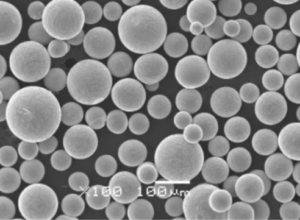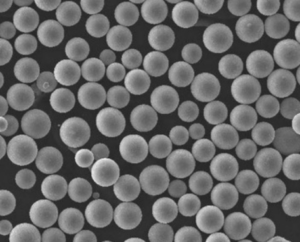전극 유도 용융 불활성 가스 원자화 (EIGA)는 고품질 금속 분말 생산에 사용되는 매혹적이고 고도로 기술적인 공정입니다. 이 기술은 특히 순도가 우수하고 입자 크기 분포가 균일하며 특정 입자 형태를 가진 분말을 생산할 수 있는 능력으로 인해 다양한 첨단 제조 응용 분야에 필수적인 기술로 평가받고 있습니다. 이 광범위한 가이드에서는 EIGA의 복잡성을 자세히 살펴보고, 특정 금속 분말 모델을 살펴보고, 그 특성, 응용 분야 및 장점에 대한 자세한 인사이트를 제공합니다.
전극 유도 용융 불활성 가스 분무 개요
전극 유도 용융 불활성 가스 분무는 유도 가열을 사용하여 금속 전극을 용융한 다음 불활성 가스를 사용하여 용융 금속을 미세 입자로 분무하는 공정입니다. 이 방법은 적층 제조, 분말 야금 및 고급 세라믹과 같은 응용 분야에서 매우 중요한 오염이 없는 분말을 생산하는 것으로 높은 평가를 받고 있습니다.
EIGA의 주요 기능:
- 순도: 이 공정은 오염을 최소화하여 고순도 금속 분말을 보장합니다.
- 입자 크기 제어: 입자 크기 분포를 정밀하게 제어할 수 있습니다.
- 구형 파티클: 구형 입자를 생성하여 유동성과 포장 밀도를 향상시킵니다.
- 다용도성: 다양한 금속 및 합금과 함께 사용할 수 있습니다.
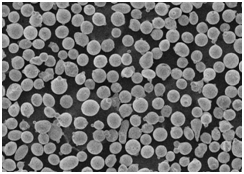
EIGA 파우더의 구성 및 특성
특정 용도에 적합한 소재를 선택하려면 EIGA 분말의 구성과 특성을 이해하는 것이 필수적입니다. 아래에서는 EIGA를 사용하여 생산되는 다양한 금속 분말의 구성과 특성을 살펴봅니다.
EIGA 파우더의 종류와 구성:
| 금속 분말 | 구성 | 속성 |
|---|---|---|
| 티타늄(Ti-6Al-4V) | 90% 티타늄, 6% 알루미늄, 4% 바나듐 | 고강도, 경량, 내식성 |
| 니켈 합금(인코넬 718) | 50-55% 니켈, 17-21% 크롬, 4.75-5.5% 니오븀, 철, 몰리브덴, 티타늄 추가 | 고온 내성, 부식 방지 |
| 스테인리스 스틸(316L) | 16-18% 크롬, 10-14% 니켈, 2-3% 몰리브덴, 균형 철분 | 부식 방지, 우수한 기계적 특성 |
| 코발트-크롬 합금(CoCrMo) | 60-65% 코발트, 26-30% 크롬, 5-7% 몰리브덴 | 높은 내마모성, 생체 적합성 |
| 알루미늄 합금(AlSi10Mg) | 85-90% 알루미늄, 9-11% 실리콘, 0.2-0.4% 마그네슘 | 가볍고, 우수한 기계적 특성, 주조 가능 |
| 구리(Cu) | >99% 구리 | 뛰어난 전기 및 열 전도성 |
| 텅스텐(W) | >99% 텅스텐 | 매우 높은 밀도, 높은 융점 |
| 마그네슘 합금(AZ91D) | 90-93% 마그네슘, 8-9% 알루미늄, 0.2-1% 아연 | 가볍고 우수한 캐스팅성 |
| 공구강(H13) | 0.32-0.45% 탄소, 4.75-5.5% 크롬, 1-1.75% 몰리브덴, 균형 철분 | 높은 내마모성, 우수한 인성 |
| 티타늄 알루미나이드(TiAl) | 45-48% 티타늄, 48-51% 알루미늄 | 가볍고 높은 온도 강도 |
EIGA 파우더의 특징:
| 특징 | 설명 |
|---|---|
| 파티클 모폴로지 | 구형, 유동성 및 포장 밀도 향상 |
| 순도 | 산화와 오염을 방지하는 불활성 가스 대기로 인해 높음. |
| 입자 크기 분포 | 정밀한 제조 공정에 필수적인 폭이 좁고 제어가 가능합니다. |
| 밀도 | 높은 탭 및 벌크 밀도로 파우더 베드 융합 기술에 유리함 |
| 표면적 | 소결 및 용융 공정 최적화를 위한 제어 |
EIGA 파우더의 응용 분야
EIGA 파우더는 고품질 금속 파우더의 고유한 특성을 활용하여 다양한 산업 분야에서 활용되고 있습니다. 아래는 다양한 응용 분야를 보여주는 자세한 표입니다.
EIGA 파우더의 적용 및 용도:
| 산업 | 애플리케이션 | 혜택 |
|---|---|---|
| 항공우주 | 터빈 블레이드, 구조 부품 | 높은 중량 대비 강도, 내열성 |
| 의료 | 임플란트, 보철, 치과용 애플리케이션 | 생체 적합성, 내식성 |
| 자동차 | 엔진 부품, 열교환기 | 경량, 고성능 |
| 전자 제품 | 전도성 잉크, 방열판 | 뛰어난 전기 전도성 |
| 에너지 | 연료 전지, 배터리 부품 | 높은 효율성, 신뢰성 |
| 적층 제조 | 복잡한 형상의 3D 프린팅 | 설계 유연성, 재료 낭비 감소 |
| 분말 야금 | 소결 부품, 베어링 | 고밀도, 균일한 미세 구조 |
| 코팅 | 용사 코팅, 내마모성 코팅 | 향상된 표면 특성, 내구성 |
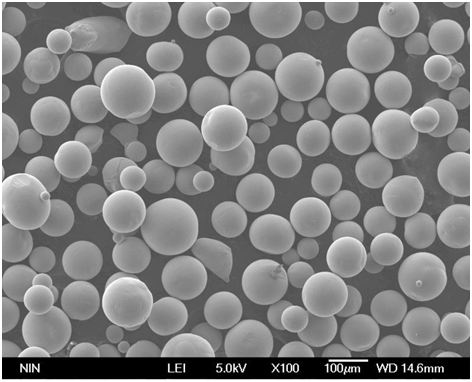
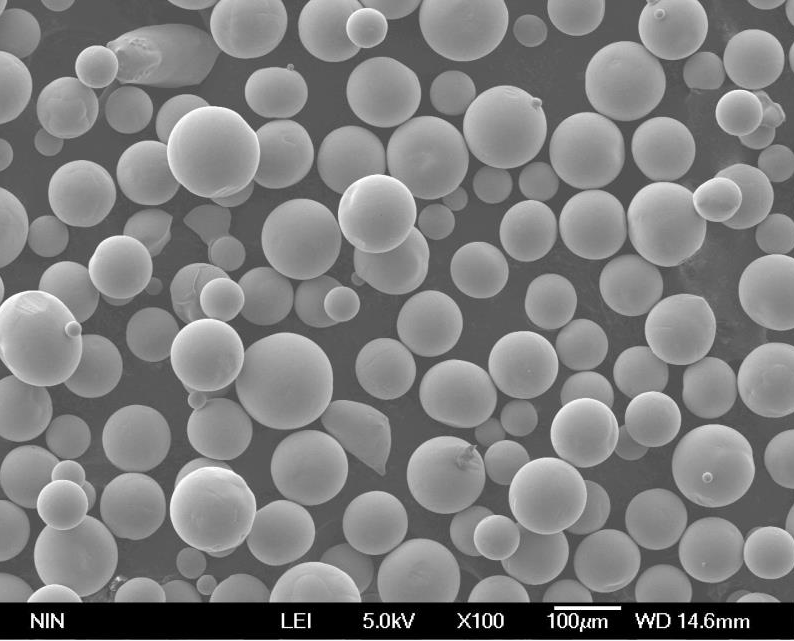
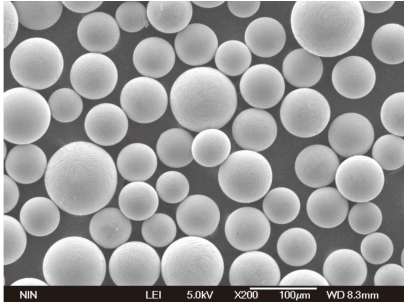
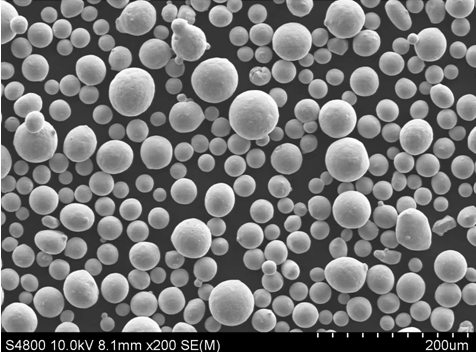
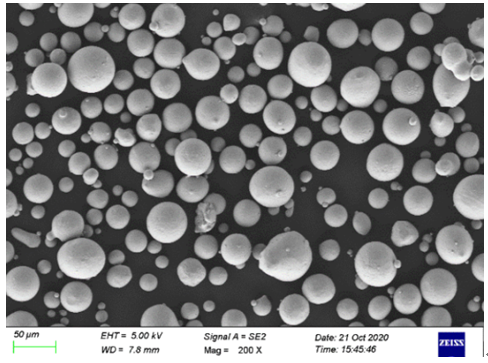
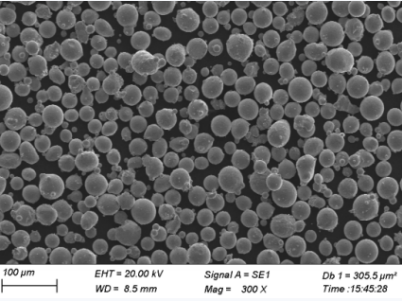
사양, 크기, 등급 및 표준
특정 용도에 맞는 EIGA 파우더를 선택할 때는 해당 재료와 관련된 사양, 크기, 등급 및 표준을 이해하는 것이 중요합니다.
EIGA 파우더의 사양 및 표준:
| 금속 분말 | 입자 크기 범위(µm) | 표준 성적 | 관련 표준 |
|---|---|---|---|
| TI-6AL-4V | 15-45, 45-90 | 5학년 | ASTM F2924 |
| 인코넬 718 | 15-45, 45-106 | AMS 5662 | AMS 5662, ASTM B637 |
| 316L 스테인리스 스틸 | 15-45, 45-106 | ASTM F138 | ASTM A276, F138 |
| CoCrMo | 15-45, 45-106 | ASTM F75 | ASTM F75 |
| AlSi10Mg | 15-45, 45-106 | EN AC-43400 | EN 1706 |
| 구리 | 15-45, 45-106 | OFHC | ASTM B216 |
| 텅스텐 | 15-45, 45-106 | W1, W2 | ASTM B777 |
| AZ91D 마그네슘 | 15-45, 45-106 | ASTM B93/B93M | ASTM B93/B93M |
| H13 공구강 | 15-45, 45-106 | ASTM A681 | ASTM A681 |
| 티타늄 알루미나이드 | 15-45, 45-106 | 사용자 지정 | ISO 5832-3 |
공급업체 및 가격 세부 정보
평판이 좋은 공급업체를 파악하고 가격 세부 정보를 이해하는 것은 고품질 EIGA 파우더를 소싱하는 데 매우 중요합니다. 아래는 몇 가지 주요 공급업체와 표시 가격을 요약한 표입니다.
EIGA 파우더의 공급업체 및 가격:
| 공급업체 | 금속 분말 | 가격 범위(USD/kg) | 연락처 정보 |
|---|---|---|---|
| 프렉스에어 표면 기술 | TI-6AL-4V | $200 – $300 | 프렉스에어 웹사이트 |
| 목수 첨가제 | 인코넬 718 | $150 – $250 | 카펜터 애디티브 웹사이트 |
| GKN 회가나에스 | 316L 스테인리스 스틸 | $100 – $200 | GKN 회가네스 웹사이트 |
| HC 스탁 솔루션 | CoCrMo | $200 – $300 | HC 스탁 솔루션 웹사이트 |
| ECKART 미국 | AlSi10Mg | $50 – $100 | ECKART 웹사이트 |
| 아메텍 특수 금속 제품 | 구리 | $50 – $100 | 아메텍 SMP 웹사이트 |
| 고급 분말 및 코팅 회사 | 텅스텐 | $300 – $500 | 고급 파우더 및 코팅 웹사이트 |
| 중누오 고급 소재 | AZ91D 마그네슘 | $50 – $100 | 중누오 웹사이트 |
| 케나메탈 | H13 공구강 | $100 – $200 | 케나메탈 웹사이트 |
| ATI 금속 | 티타늄 알루미나이드 | $300 – $500 | ATI 금속 웹사이트 |
EIGA 파우더의 장단점 비교
EIGA 파우더의 장점과 한계를 평가하면 특정 애플리케이션에 대한 정보에 입각한 결정을 내리는 데 도움이 됩니다.
EIGA 파우더의 장점과 한계:
| 이점 | 설명 |
|---|---|
| 고순도 | EIGA는 오염을 최소화하여 고순도 분말을 생산합니다. |
| 균일한 입자 크기 | 입자 크기 분포를 정밀하게 제어할 수 있습니다. |
| 구형 입자 | 적층 제조에 중요한 유동성과 패킹 밀도를 향상시킵니다. |
| 다양한 소재 범위 | 다양한 금속 및 합금으로 분말을 생산할 수 있습니다. |
| 낮은 산소 함량 | 불활성 가스 분위기는 산화를 줄여 재료의 무결성을 유지합니다. |
| 제한 사항 | 설명 |
|---|---|
| 비용 | EIGA 파우더는 다른 방식에 비해 가격이 비쌀 수 있습니다. |
| 복잡성 | 이 프로세스에는 정교한 장비와 전문 지식이 필요합니다. |
| 생산량 | 단일 배치에서 생산할 수 있는 분말의 양이 제한될 수 있습니다. |
| 에너지 소비량 | 유도 용해로 인한 높은 에너지 요구 사항. |
자세한 인사이트 및 예시
티타늄(Ti-6Al-4V) 대 인코넬 718:
티타늄 Ti-6Al-4V와 인코넬 718은 고성능 애플리케이션에 사용되는 두 가지 대표적인 금속 분말입니다. 중량 대비 강도와 내식성이 높은 것으로 알려진 Ti-6Al-4V는 항공우주 및 생물의학 분야에서 광범위하게 사용됩니다. 반면, 고온 강도와 내산화성이 뛰어난 인코넬 718은 극한 환경에서 작동하는 항공우주 부품에 선호됩니다. 두 소재를 비교하면 Ti-6Al-4V는 더 가볍고 무게에 민감한 애플리케이션에 더 적합한 반면, 인코넬 718은 고온 조건에서 더 나은 성능을 제공합니다.
스테인리스 스틸 316L 대 알루미늄 합금(AlSi10Mg):
스테인리스 스틸 316L과 알루미늄 합금 AlSi10Mg는 일반적으로 적층 제조에 사용됩니다. 316L은 내식성과 기계적 특성으로 선호되며 의료 및 해양 분야에 이상적입니다. 반면에 가볍고 주조가 가능한 AlSi10Mg는 무게를 줄이는 것이 중요한 자동차 및 항공우주 분야에 탁월합니다. 316L은 내구성을, AlSi10Mg은 경량화를 제공하는 이 두 소재의 선택은 특정 애플리케이션의 요구 사항에 따라 결정되는 경우가 많습니다.
의료용 코발트-크롬 합금(CoCrMo):
코발트-크롬 합금(CoCrMo)은 높은 내마모성과 생체 적합성으로 인해 의료 분야, 특히 임플란트 및 보철에 널리 사용됩니다. 신체의 열악한 환경을 열화 없이 견디는 합금의 능력 덕분에 장기 임플란트에 가장 적합한 소재입니다. 또한 기계적 특성은 하중을 견디는 용도에 적합하여 의료 기기의 신뢰성과 수명을 보장합니다.
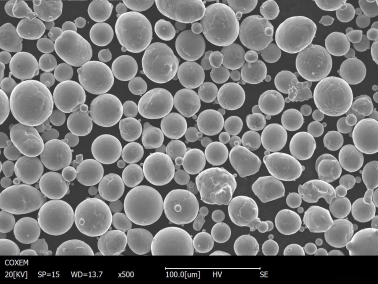
자주 묻는 질문
| 질문 | 답변 |
|---|---|
| 전극 유도 용융 불활성 가스 분무란 무엇인가요? | EIGA는 유도 가열을 사용하여 금속 전극을 녹이고 불활성 가스를 사용하여 용융된 금속을 미세 입자로 분무하는 공정입니다. |
| EIGA를 사용하여 가공할 수 있는 금속은 무엇인가요? | 티타늄, 니켈, 스테인리스강, 코발트-크롬, 알루미늄, 구리, 텅스텐, 마그네슘, 공구강, 티타늄 알루미나이드 등 다양한 금속 및 합금으로 제작됩니다. |
| EIGA 파우더를 사용하면 어떤 이점이 있나요? | EIGA 분말은 고순도, 균일한 입자 크기, 구형 형태, 낮은 산소 함량을 제공하므로 첨단 제조 분야에 이상적입니다. |
| EIGA는 다른 파우더 생산 방식과 어떻게 다른가요? | EIGA는 더 비싸고 복잡할 수 있지만 가스 분무나 물 분무와 같은 방식에 비해 순도와 입자 제어가 뛰어납니다. |
| EIGA 파우더의 일반적인 용도는 무엇인가요? | 항공우주 부품, 의료용 임플란트, 자동차 부품, 전자 제품, 에너지 시스템, 적층 제조, 분말 야금, 코팅 등 다양한 분야에 적용됩니다. |
| EIGA 파우더를 선택할 때 고려해야 할 요소는 무엇인가요? | 주요 요인으로는 특정 애플리케이션 요구 사항, 원하는 재료 특성, 입자 크기 분포, 순도, 비용 등이 있습니다. |
| 적층 제조에 EIGA 파우더를 사용할 수 있나요? | 예, EIGA 파우더는 입자 크기 분포가 제어되고 순도가 높아 적층 제조에 매우 적합하며 인쇄된 부품의 품질을 향상시킵니다. |
| EIGA 파우더의 일반적인 입자 크기 범위는 어떻게 되나요? | 입자 크기는 일반적으로 애플리케이션과 요구 사항에 따라 15~106미크론입니다. |
| EIGA 파우더를 사용하는 데 제한이 있나요? | 높은 비용, 공정의 복잡성, 제한된 생산량, 높은 에너지 소비 등의 한계가 있습니다. |
| EIGA 파우더는 어디에서 구입할 수 있나요? | 평판이 좋은 공급업체로는 Praxair Surface Technologies, Carpenter Additive, GKN Hoeganaes, HC Starck Solutions, ECKART America, AMETEK Specialty Metal Products, Advanced Powder & Coatings Ltd, Zhongnuo Advanced Material, Kennametal 및 ATI Metals가 있습니다. |
결론
전극 유도 용융 불활성 가스 원자화 은 고품질 금속 분말 생산에 중추적인 역할을 하는 최첨단 기술입니다. 뛰어난 순도, 정밀한 입자 크기 분포, 구형 형태를 갖춘 분말을 생산할 수 있어 항공우주, 의료, 적층 제조와 같은 첨단 제조 분야에서 없어서는 안 될 필수 요소입니다. 업계에서는 EIGA 분말의 구성, 특성, 응용 분야 및 장점을 이해함으로써 이 기술을 활용하여 제품의 우수한 성능과 혁신을 달성할 수 있습니다.
이 종합 가이드는 엔지니어, 연구원, 제조업체 등 모든 사용자에게 EIGA 분말의 복잡성을 탐색하고 특정 요구 사항에 맞는 정보에 입각한 결정을 내리는 데 필요한 지식과 인사이트를 제공합니다.
